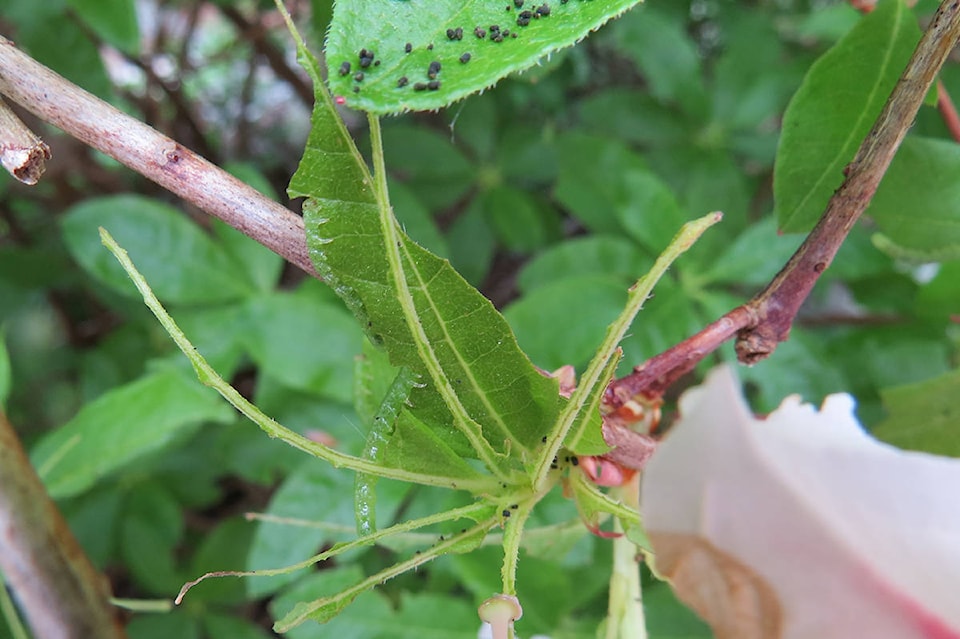Silly me. I had thought there would be a reprieve from the number of pests in the garden this spring. Honestly, there should be some compensation for all the rain and snow this last winter. Not complaining! Just a few less pests would be nice.
I could certainly do without the azalea sawfly larvae which are ravaging the leaves on my two favourite azaleas. There are so many of them, their damage is painfully evident.
Leaves chewed down to the mid-rib is the first clue this pest is on your azalea - botanically known as rhododendron. A spray of leaf veins at the branch tips is a horrifying testament to their voracious appetite. Rather incredible given their diminutive size ranging roughly 3 mm to 8 mm through the different growth, or instar, stages.
Another clue is the accumulated black dots of excrement. In a “mild pest year”, the excrement may not be too noticeable since we usually focus on the floral display, typically viewed from a distance for full impact value. Unless one of those azaleas is scented…like our ‘Irene Koster’ which truly entices you to step up close and sink your nose in a flower.
However, in a heavy infestation, you will definitely notice the excrement scattered on the leaves and flowers under the feasting area. Let’s face it. Anything which gorges itself to this extent is going to have a lot of discarded substance coming out the other end. Sadly, it does not brush off very easily.
What to do about these guys? Being organic by nature, I have spent a bit of time spaced over a few days handpicking the larvae off the two azaleas. (It made a good excuse to stand up for a change, easing the strain on back and knees.)
Be forewarned; these larvae are very difficult to spot because their colour is a perfect hue to blend in with the green leaves. But, after only a little time and effort on my part, I have become quite adept at spotting the little blighters which were subsequently picked off, dropped onto the ground, and rubbed out under my boot. (If you lean towards squeamish, just drop them into a container of soapy water.)
As often happens, assistance in dealing with any pest will eventually arrive…and not always in human form. In this case, it was the European paper wasp. I spied one wrestling with a larva, adjusting its hold on it in its mandibles before flying off to share its lunch. Judging by the contortions of the larva, it was caught in a death grip.
There has been another predator at work too, because I have seen a few tiny first instar larvae flattened and glued to a leaf. It looks like this predator is sucking the body juices from its prey. Once finished, it moved away and the corpse became glued to the leaf by its remaining body juices. At least this is my theory because they are hard to scratch off the leaf.
I have not seen any yet, but I suspect the mysterious predator may be a goldenrod spider. They are great hunters and do not wrap their prey in silk, as other spiders do. At least, that has been my observation.
There is another possible pest infestation judging by the number of white moths which have appeared in our neighbourhood. Have narrowed it down to either the adult stage of the yellow woolly bear caterpillar or fall webworm. I am leaning towards the former but ID is difficult as there are variable markings on the wings of both species. Anyone have ideas? (Go to duchessofddirt.ca to see a photo of the moth.)
Leslie Cox co-owns Growing Concern Cottage Garden in Black Creek. Her website is at www.duchessofdirt.ca and her column appears every second Thursday in the Record.
